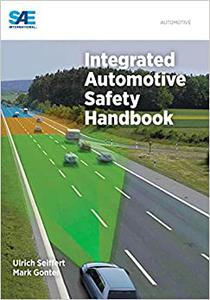
Mark Gonter Ulrich W. Seiffert, "Integrated Automotive Safety Handbook"
English | 2013 | pages: 214 | ISBN: 0768064376 | EPUB | 21,6 mb
Even though a number of developed countries enjoy a high level of vehicle safety, more than 1.2 million fatalities still occur each year on roadways worldwide. There remains a need to continue improving vehicle and road safety.
New technologies in sensors and electronic control units, and the growing knowledge of car-to-car and car-to-infrastructure technologies have led to a fusion of the previously separated areas of accident avoidance (popularly known as active safety) and mitigation of injuries (popularly known as passive safety) into the newer concept of integrated vehicle safety. This new approach represents a further step toward lowering accident rates.
This book, written by two of the foremost automotive engineering safety experts, takes a unique and comprehensive approach to describing all areas of vehicle safety: accident avoidance, pre-crash, mitigation of injuries, and post-crash technologies, providing a solutions-based perspective of integrated vehicle safety. Also covered are accident investigation and worldwide legislation as they apply to integrated vehicle safety. The man-machine interface, biomechanics and development and simulation techniques are also key concepts that are thoroughly described. Special attention is given to driver assistance systems and to compatibility in car-to-car crashes and pedestrian protection.
Chapters cover: accident research, functions of integrated safety, biomechanics and protection criteria, injury mitigation, adaptive occupant protection, compatibility, calculation and simulation, and the future.
The book is useful for those interested in any aspect of automotive safety. Engineers and scientists from the automotive industry can learn new details as well as the broad perspective of vehicle safety today. The book also provides key information to traffic safety professionals, law enforcement, insurance practitioners, and journalists. Those who help shape traffic and vehicle legislation can gain a wider understanding of the topic to help them craft better laws. The book also serves as a valuable learning resource for academicians and students.



